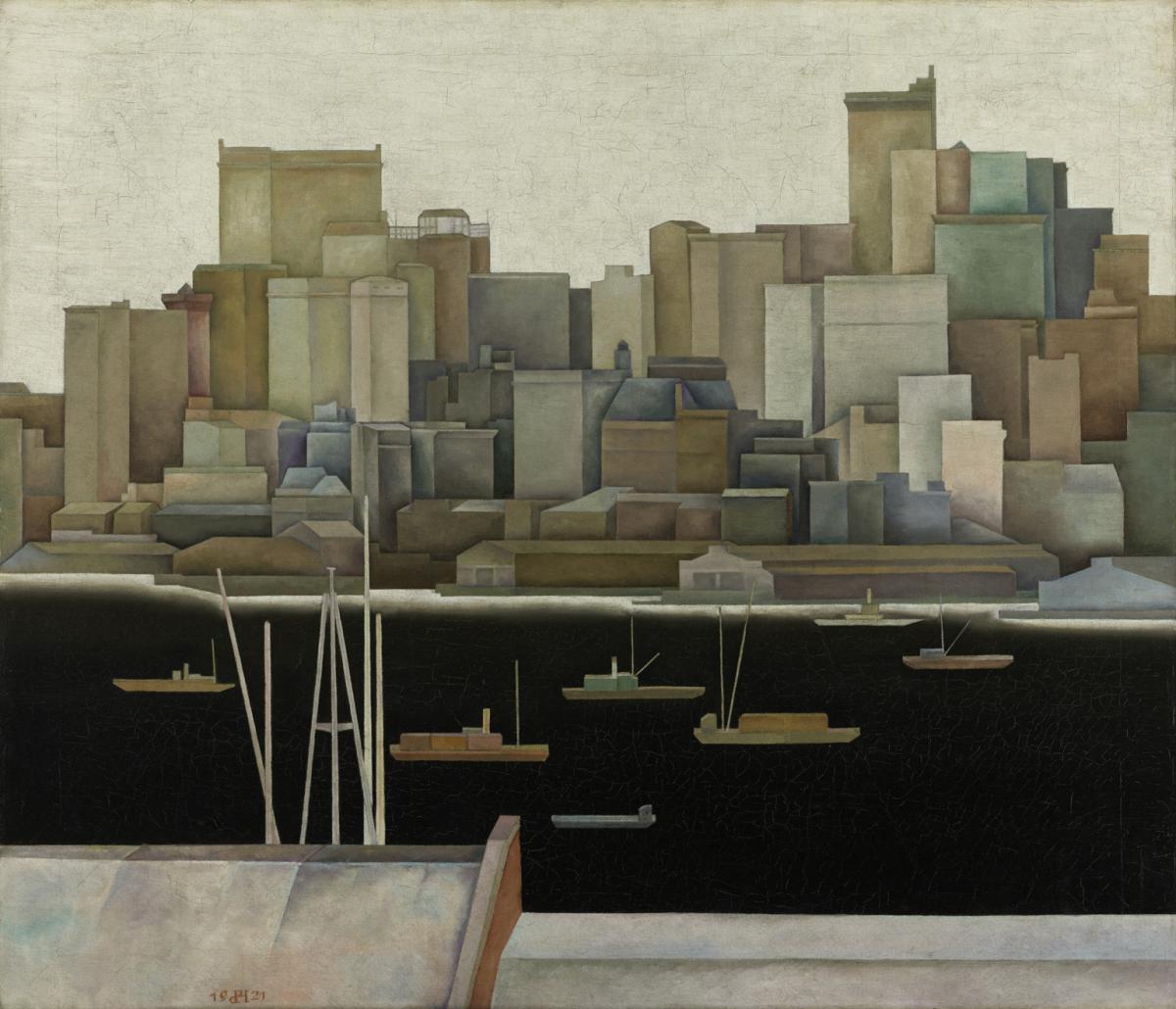New York, Lower Manhattan
Stefan Hirsch ( 1921 )

In 1925 Duncan Phillips acquired the painting New York, Lower Manhattan by German-born artist Stefan Hirsch. An avowed modernist, Hirsch settled in New York City in 1919. His stark depictions of urban and industrial environments demonstrated the influence of European modernists Paul Cezanne and Pablo Picasso, whose works broke landscapes and architectural forms down into modulated elements.
While Hirsch’s work is clearly indebted to these early cubist forays into abstraction, he was also affiliated with the American precisionist school of painters that included Charles Sheeler and Ralston Crawford who were focused on America’s rapidly industrializing urban spaces. In Lower Manhattan, Hirsch’s modernist language of flat planes and simplified geometric forms captures the stark modernity and cool physical rigidity of the burgeoning city. His is an elegant but desolate view of New York from across the Hudson River. Devoid of nature and people, the only reference to organic material is the flat black river upon which cargo boats glide. Hirsch’s spare geometric abstraction aptly communicates a sense of quiet foreboding about industrialization.
Text by Adrienne L. Childs as part of the Seeing U.S. Research Project
Stefan Hirsch achieved wide acclaim in the 1920s and 1930s for paintings of America’s urban landscape that show attention to detail, and combine clean, dry outlines with harmonious colors. His pictures typically depict the skyline of Lower Manhattan in a precisionist-influenced, hard-edged geometric style, as in this early example.
Unlike many of his contemporaries, Hirsch was not optimistic about the growing industrializations of America and his paintings were not necessarily celebrations of it. Hirsch once stated that “instead of finding the fresh, open view which I had ideally assumed to exist from reading Walt Whitman, Emerson, and Thoreau, I was confronted with the piles of steel and concrete that kept all the sun from the Wall Street area.” New York, Lower Manhattan is meant to convey the city as hostile and off-putting. He stated in a letter in 1960 that these peopleless, windowless buildings were “not altogether the accident of abstraction but also expressed [his] recoil from the monstrosity that industrial life had in megapolitania.”
Duncan Phillips, the first to acquire Hirsch’s work for a museum collection, recognized in New York, Lower Manhattan a “strange harmony” of subtly orchestrated color tones. He included the painting the following year in an exhibition of American artists. He wrote: “The canvas entitled New York is a symbolic decoration—a concept of a great city rearing its fabulous towers and its walls without windows about the menace of a black river under the purity of a pellucid sky. The grim battlements of Industry are all beautiful in a strange harmony of subtly orchestrated color. Behold our Civilization seen with a hint of prophecy.”